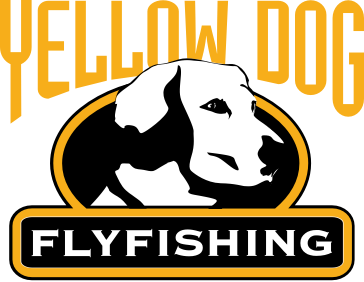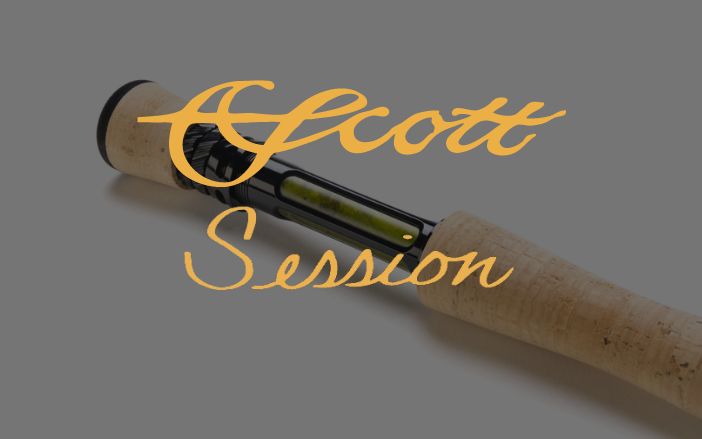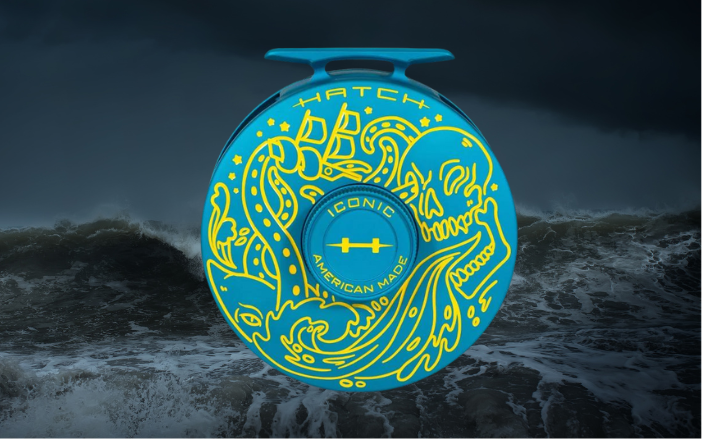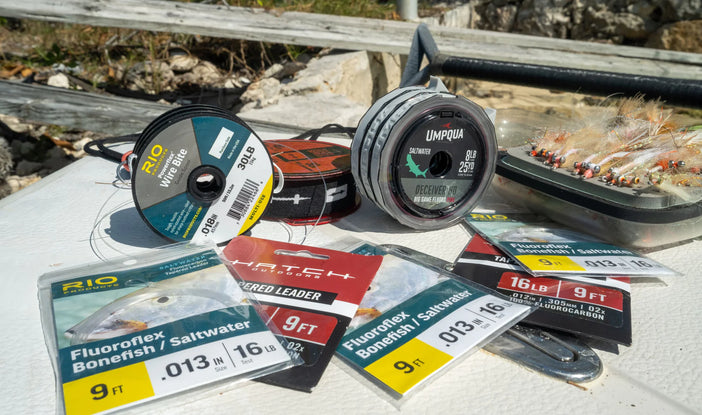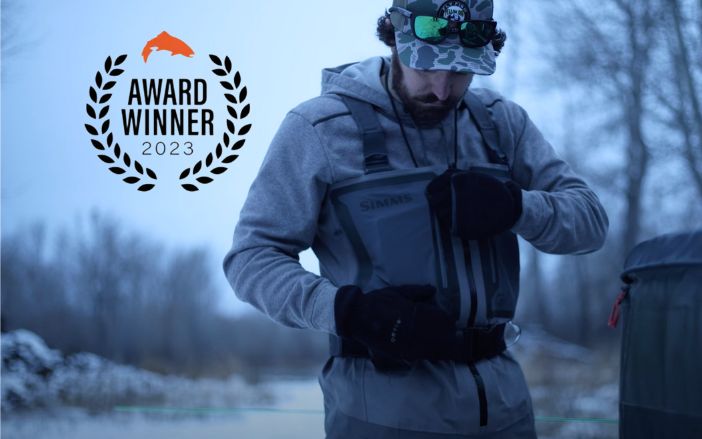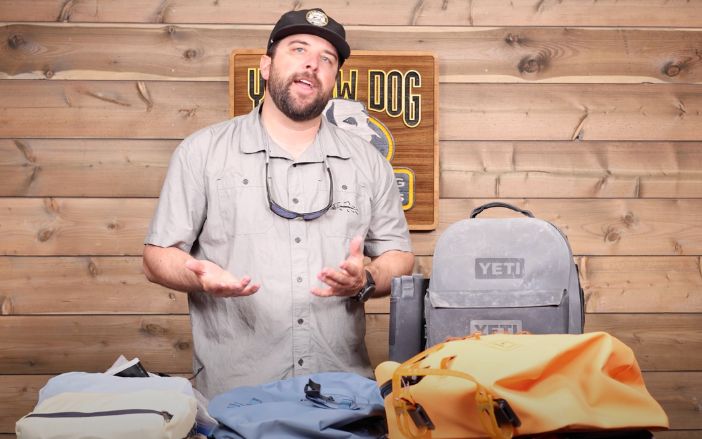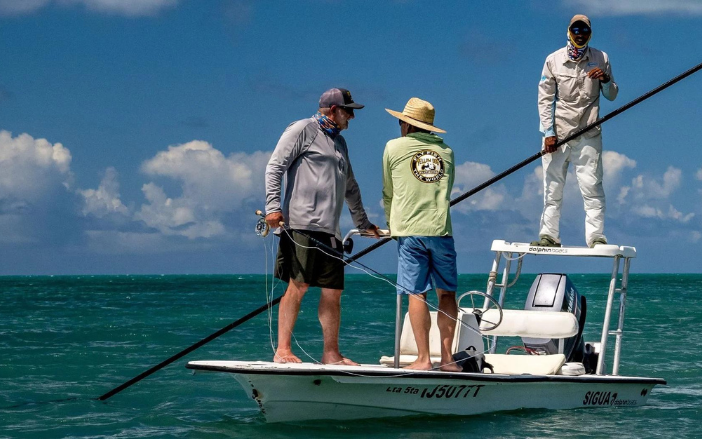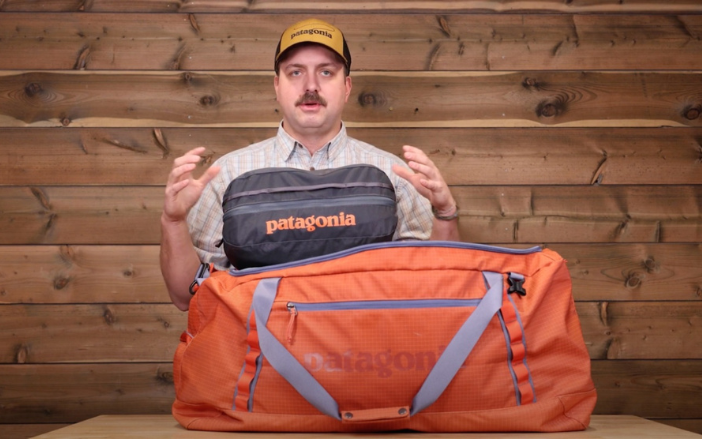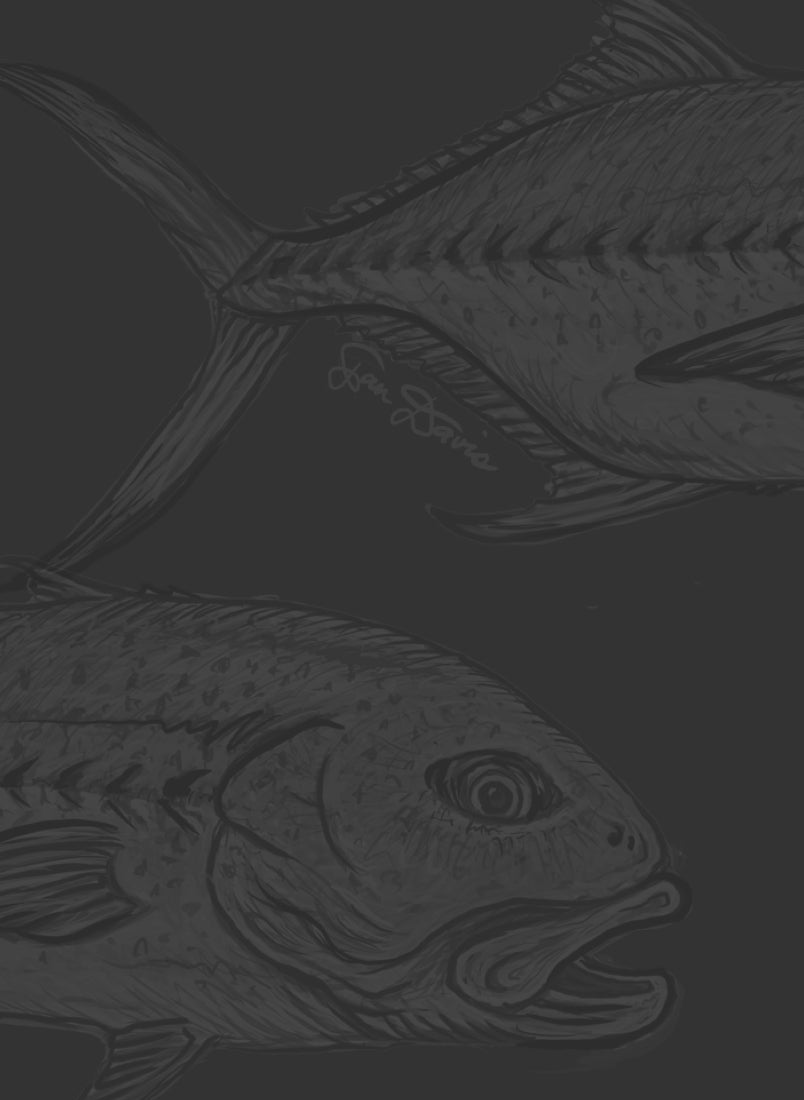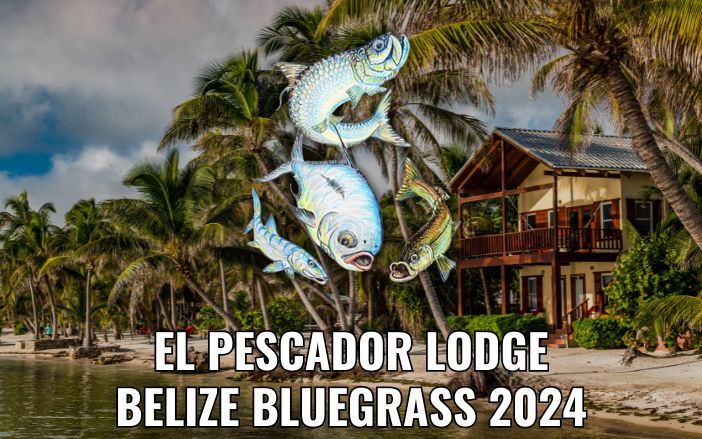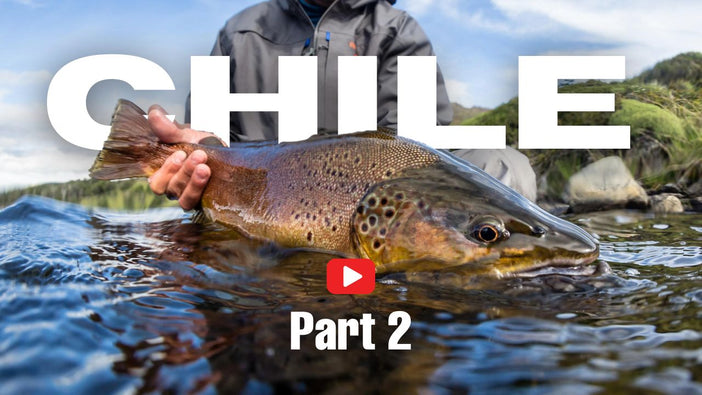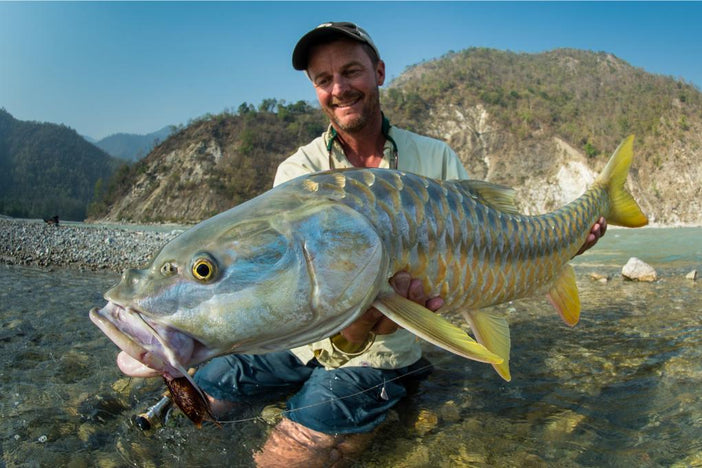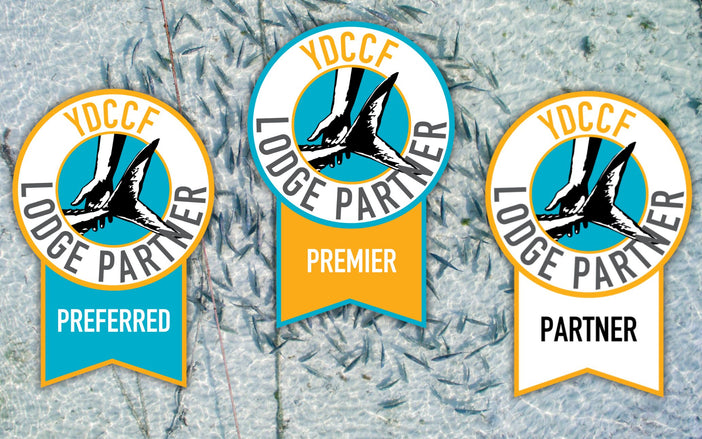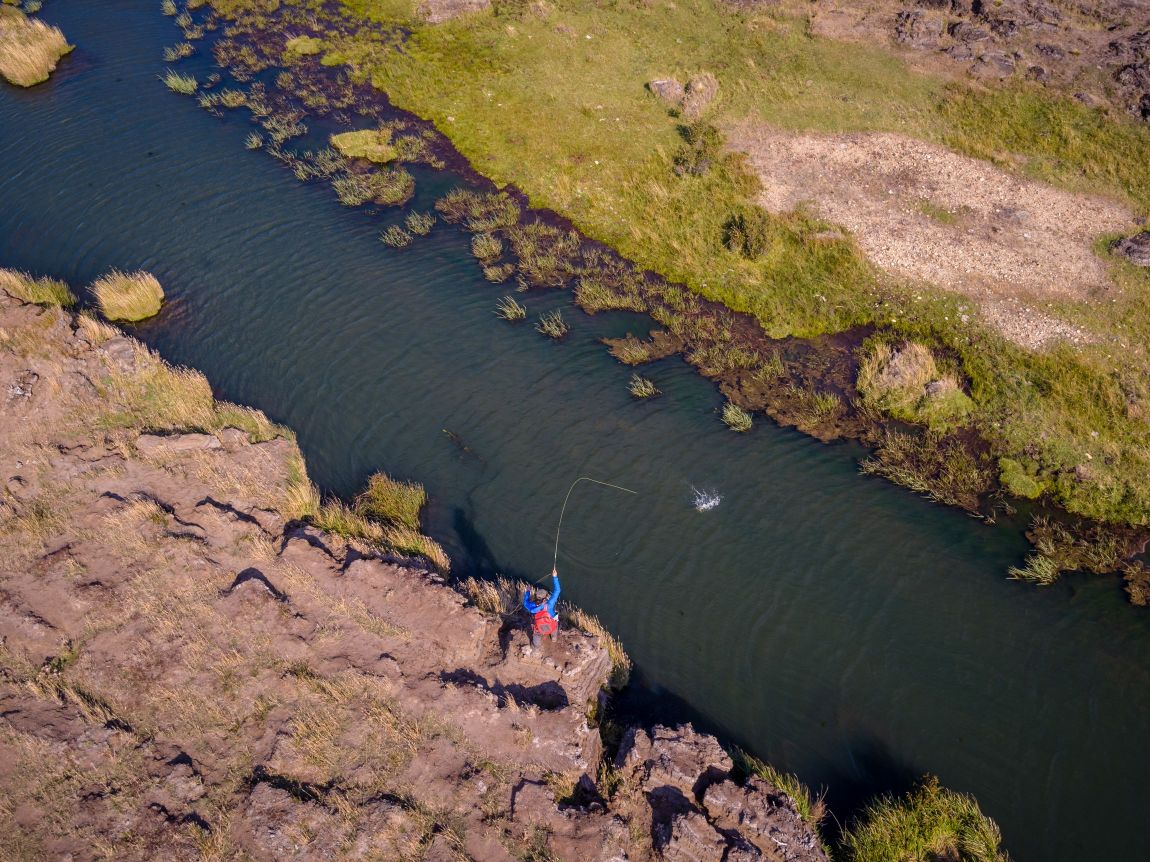Argentina offers an amazing diversity in fishing–not only in its settings but in the species targeted. Northern Argentina is well-known for its massive golden dorado, an apex predator that is generally sight-fished in rivers and lagoons. A marked difference from the Argentine offerings in the south, these fish destroy well-presented flies and are one of the most prized game species found anywhere in the world.
+ Listen to this WAYPOINTS Podcast: Jack Porter - Argentina and Chile: How to Choose the Best Options for a South America Fishing Trip
The Patagonia portion of Argentina offers some of the finest trout fishing found anywhere–big dry flies and streamers in some of the most pristine trout habitats available. Exceptional lodges, a fantastic cultural experience, and a freshwater fishing experience make for what many call “a trip of a lifetime.”
At the bottom of South America, a few operations represent the best sea-run brown trout fishing in the world. These fish regularly weigh over twenty pounds, reaching over thirty, and provide anglers with trophy fish every week of the season. A long journey rewards anglers as there is practically nowhere else anglers can expect to target sea-run brown trout in this quantity and quality.
Northern Argentina Golden Dorado Fly Fishing
Target Species: Golden Dorado, Pira Pita, and Pacu
Season: Year-round with seasonal spawning closures on the Parana river in November and December
Major Fisheries: Parana River, Corrientes River, and Ibera Marshlands
Non-Angling Area Activities: Wildlife viewing
Closest Major Air Hubs: Buenos Aires (AEP/EZE), Corrientes (CNQ), or Resistencia (RES)
Golden dorado is often viewed as the apex predator fish in South America. Despite their ferociousness, strength, and brute power, they are exceptionally beautiful creatures to target on the fly. Fly fishing for golden dorado has grabbed the imagination of many anglers over the past decade, and for good reason; they provide incredibly aggressive strikes and acrobatic fights. Argentina runs some of the best golden dorado operations in South America.

The Northern Argentina region has two primary and distinctly different dorado fisheries – the Parana river and the Ibera Marshlands – that offer their own unique qualities. The Parana River is a massive tailwater that flows southward from Brazil, creating a natural border between Argentina and Paraguay on its uppermost stretches. It runs its final course through Argentina (on both banks) as it finds its way to the Atlantic Ocean.
Due to its immense size, it’s most effectively fished from powered boats while blind casting large streamer patterns to the abundant structure along its thickly vegetated jungle-like banks. With an area twice the size of the Florida Everglades, the Ibera Marshland is the second largest wetland ecosystem globally. The system comprises an enormous labyrinth of intimate creeks and lagoons that drain into the Corrientes River. Its crystal-clear waters create great sight-casting opportunities for cruising fish.
Aside from Dorado, depending on the time of the season and area fished, anglers can catch a variety of other sought-after “jungle” species that are typically found in the same environment, including Pira pita, Pacu, and Wolfish. Along with a diverse offering of exotic fish species, the area also supports a wide variety of wildlife. Guests can expect to see Capybara, Caiman, and countless species of birds.
Yellow Dog works with and represents several excellent and varied fly fishing-specific programs located in the sub-tropical region of Northern Argentina that offer easy travel logistics from Buenos Aires, terrific guides, and top-of-the-line service and accommodations.
Unlike the other popular dorado fisheries found in Bolivia, the programs in Northern Argentina are easily approachable to newcomers looking to test their hand at these magnificent fish without complicated travel logistics or the commitment of locking in a full-week package. In fact, trips of varying lengths can be easily added to any Patagonia trout trip or combined to create an ultimate dorado experience.
Golden Dorado Lodges:
- Golden Dorado River Cruiser
- Pinti’s Dorado on the Fly
- Urban Dorado Anglers (excellent day trip option!)
- UDA Rio Mate Lodge
- UDA Winery Lodge
Recommended Gear For Northern Argentina Golden Dorado
Yellow Dog recommends anglers bring 2-3 rods in the 7 to 9-weight range. Alternate species such as pacu are generally targeted on a lighter setup, while golden dorado requires an 8 or 9-weight. Tropical floating lines make up most of golden dorado fishing, while an intermediate line can occasionally be useful.
Regarding leaders and tippet, it is recommended you build your own or with the guide’s assistance. We recommend packing spools of fluorocarbon ranging from 20 to 40 pound class. In addition, anglers should bring a spool of 30-pound wire for steel bite tippets.
Flies: Golden dorado flies are generally baitfish imitations tied on high-quality, chemically sharpened hooks. Flies 4 to 8 inches, tied on 2/0 to 4/0 sizes, are used. Common color patterns include all-black or black with purple, red, orange, or yellow. A few examples are:
- EP streamer patterns
- Lefty’s Deceiver
- Andino Deceiver
- Clouser Minnow
- Large foam poppers or mouse imitations
For pacu and yatorana, large terrestrial patterns such as Chornobyl Ants are a fantastic choice.
Looking for more information on fishing for golden dorado? Check out our Golden Dorado Fly Fishing Guide.

Northern Patagonia, Argentina Fly Fishing
Target Species: Rainbows and brown trout
Season: November – April
Major Fisheries: Malleo, Chimehuin, Collon Cura, Filo Hua Hum, Limay, Alumine, Traful
Non-Angling Area Activities: Hiking, horseback riding, birdwatching, high-end resorts, art gallery tours
Closest Major Air Hubs: San Martin de los Andes (CPC) and Bariloche (BRC)
In many regards, the San Martin and Junin de Los Andes area of Northern Patagonia is the region that put Argentina on the map for world-class trout fishing. With its wide-open mountainous terrain, dry temperate climate, consistent aquatic insect hatches, and a huge variety of available trout waters, this area reminds anglers more of Montana than any other fishing region in Argentina. Nearly all of this region lies within Argentina’s beautiful Neuquen Province – an area consisting of numerous glacial lakes, an abundance of freestone rivers, snow-studded volcanoes, and dense forests.
Trips to this region are mainly organized through a handful of our partner outfitters that Yellow Dog has worked with for years. These operators arrange flexible, custom-tailored fishing itineraries that combine exceptional guiding, diverse lodging options, deluxe overnight wilderness float trips, quick transfer times, private and public fisheries access, and delicious regional cuisine.
With most trip packages in this region, guests travel and fish with their guide throughout the course of the week, staying at classic estancias or lodges while enjoying easy access to a wide variety of productive rivers. With widespread daily hatches of mayflies and caddis found throughout the region, anglers can expect some of the best dry fly fishing that Patagonia offers. Other fishing opportunities include such phenomena as huge minnow runs, “hatches” of willow worms, and the presence of aquatic pancora crabs.
All of the region’s waters are populated by wild and beautiful rainbow and brown trout, and – depending on the river – anglers can choose to either wade or float fish. Smaller rivers like the Malleo, Filo Hua Hum, and Traful, are waded, while larger rivers like the Chimehuin, Alumine, Collon Cura, and Limay are usually fished from drift boats. The area’s pleasant and relatively stable climate allows for excellent fishing conditions from the beginning of the season in November all the way through late April.
Northern Patagonia Lodges:

Central Patagonia, Argentina Fly Fishing
Target Species: Rainbow, brown, and brookSeason: November – April
Major Fisheries: Arroyo Pescado, Rivadavia, Arrayanes, Corcovado, Tecka, Carrileufu, Corintos, Chubut, Nilson, Rio Pico, Rio Grande
Non-Angling Area Activities: Hiking in Los Alerces National Park, horseback riding, birdwatching
Closest Major Air Hubs: Esquel (EQS) and Bariloche (BRC)
The Central Patagonia part of Argentina offers this South American country the greatest variety and diversity of fishable waters. With small creeks, natural spring creeks, small and large rivers, and lakes, all back-dropped by micro-regions of open steppes, rugged mountains, and temperate forests, Central Patagonia feel like parts of the U.S. West of nearly a half-century ago.
The region comprises three separate and distinct areas: Esquel, Los Alerces National Park, and Rio Pico. The waters throughout this region are as varied as the countryside.
In many ways, the Esquel area resembles fishing in the northern Rockies of the US. With dozens of rivers flowing through an arid steppe ecosystem defined by wide-open valleys and rocky escarpments, the look and feel are akin to Montana or Wyoming. In contrast, Los Alerces National Park contains a network of rivers and glacially-formed lakes surrounded by thick, temperate rainforest and feels remote and undeveloped.
Further south, the remote and open expanses of the Rio Pico region offer anglers the chance to explore and fish several off-the-beaten-path rivers, spring creeks, and high-desert-like lakes for larger-than-average trout.
With so many fishing options found throughout this region, guests can customize a fishing week based on their preferences to wade small technical freestones and spring creeks, float big rivers, or chase trophy-sized trout on productive lakes. Additionally, anglers can employ a wide range of techniques depending on the time of year and conditions, including stalking fish with small dry flies and nymphs to stripping streamers to large, aggressive fish.
Over the course of a trip, on many of the rivers and creeks, anglers can expect to catch good numbers of strong, wild trout in the 12 to 20-inch range, with plenty of shots at fish exceeding 20-inches.
Although this region of central Patagonia is home to a diverse and exciting array of fly fishing options, a variety of non-angling activities, including hiking in Los Alerces National Park, horseback riding, birdwatching, and whitewater river rafting can be arranged.
For the most part, the fishing lodges located in this region offer fixed, full-week packages where guests can fish different rivers and lakes each day, and non-angling companions can enjoy a wide array of options each day. With lodge-based operations, anglers and non-anglers come home to the comfort of a “home base” lodge for an evening of amazing food, great wines, and genuine Argentine hospitality.
Central Patagonia Lodges:
- Carrileufu River Lodge
- El Encuentro Fly Fishing
- Rio Manso Lodge
- Las Pampas Lodge
- Patagonia River Guides South

Southern Patagonia, Argentina Fly Fishing
Target Species: Rainbow, brown, and brook trout, with seasonal steelhead
Season: November – April
Major Fisheries: Lago Strobel—aka Jurassic Lake, Barrancoso River, Santa Cruz River
Non-Angling Area Activities: Birdwatching, hiking, horseback riding, glacier tours
Closest Major Air Hubs: Calafate (FTE), Comodoro Rivadavia (CRD) and Rio Gallegos (RGL)
As Argentina’s second-largest and most sparsely populated province, Santa Cruz is also one of the most underdeveloped and untouched fishing regions in all of Patagonia. From the towering and jagged cordilleras of the Andes Mountains on its western border with Chile, Santa Cruz is bordered by Chubut Province to the north, Tierra Del Fuego to the south, and the Atlantic Ocean on the east.
The majority of this southern Patagonian province is a desolate and windswept semi-desert environment marked by vast plateaus, wide-open grasslands, and massive lakes created by glaciers that once upon a time receded from the Andes.
Although there are numerous fishing options throughout the region, this area is perhaps most famous for being home to Lago Strobel, a massive piece of water that is more commonly known as Jurassic Lake. Over the past ten years, Jurassic has earned its reputation as the world’s best and most consistent trophy rainbow trout fishery on the planet – home to rainbows that routinely meet and exceed the 20-pound mark.
The area is also home to the Santa Cruz River—which has the only known run of steelhead on the Atlantic Coast—and a vast network of small spring creeks filled with larger-than-average-sized brown and brook trout. While most waters in the region are largely devoid of insect hatches, they are teeming with insane populations of scuds – tiny freshwater shrimp that trout eagerly feast on.
It is common to fish all throughout this region in total solitude: wading and exploring remote waters without seeing another person. And while the fishing programs are indeed the major draw for this area, non-angling guests can arrange glacier tours in Los Glaciares National Park and trekking excursions around Mount Fitz Roy before or after fishing packages. All in all, the southern Patagonia region is ideal for anglers seeking off-the-beaten-path fishing experiences in a seldom-seen and largely unexplored part of the world.
Southern Patagonia Lodges:

Recommended Gear For Patagonia, Argentina
Anglers should bring a couple of rods:
9-foot 5 or 6-weight with floating line for dry fly fishing
9-foot 7 or 8-weight range with a 200-250 grain sink tip for streamer fishing
To best prepare for each fishing scenario, Yellow Dog recommends bringing leaders and tippet in the 0x-5x range.
Dry Flies: Attractor dry fly patterns are incredibly effective here, in addition to a number of common dry flies:
- Fat Albert (6-10)
- Chubby Chernobyl (4-8)
- Foam Ants (14-16)
- Foam Beetles (16)
- Dragonfly and Mouse Patterns
- Various caddis and mayfly dry fly imitations such as Parachute Adams and Parachute Spinners.
Streamers: Natural-colored streamers in the #2-6 range are an angler’s best option. A few patterns may include:
- Bow River Buggers (4, 6)
- Conehead Buggers (2-6)
- Kelly Galloup Streamers (2-6)
- Sculpzilla (4-8)
- McKnight’s Home Invader (4, 6)
Nymphs: Typically fished beneath an attractor dry fly pattern, a few common nymph patterns work well here:
- Pat’s Rubber Legs (4-8)
- Beadhead Pheasant Tail (12-18)
- Beadhead Prince (10-14)
- Assorted Midge Patterns (16-18)
Fly selection for this area changes based on location, time of day, bug activity, and guide preference! These recommendations are a loose guideline for filling up your box, but Yellow Dog and your guide are happy to assist you.
In addition to fishing gear, anglers should prepare for Patagonia’s somewhat unpredictable climate. A sunny, warm day may quickly transition to windy and cold, so anglers should prepare accordingly. Layers are key for staying comfortable in changing conditions and keeping you on the water.
A rain jacket is a must for this region, so anglers can keep fishing after a passing shower. Anglers should bring high-quality, breathable chest waders and *clean* felt-sole boots for most trips to Patagonia. “Spiked” boots are allowed in some locations, but only in wading scenarios.

Tierra del Fuego Region Fly fishing
Target Species: Sea-run brown trout
Season: January – April
Major Fisheries: Rio Grande
Non-Angling Area Activities: Hiking, birdwatching, boat tours of the Beagle Channel, and visits to nearby penguin colonies
Closest Major Air Hubs: Rio Grande (RGA) and Ushuaia (USH)
Tierra del Fuego, meaning the “Land of Fire” in Spanish, is an archipelago off the southernmost tip of the South American continent, with Chile controlling the western half and Argentina governing the eastern half of the mainland.
The eastern region is made up of rolling hills and vast, barren grazeland that quickly transitions to beautiful mountainous areas and beech tree forests on the western parts of the island. With ubiquitous winds and cool average temperatures, the summer weather in Tierra del Fuego is like that found in the Aleutian Island chain on the Alaska Peninsula near Russia.
The destinations featured here provide incredibly unique sea-run brown trout fishing. Still, they all are similar because they have professional and knowledgeable guides, quality accommodations, and outstanding food and wine with access to these amazing southern waters and the trophy fish that swim in them.
The Tierra del Fuego region is synonymous with world-class, sea-run brown trout fishing on the renowned Rio Grande within the fly fishing community. With annual returns in the tens of thousands, the Rio Grande is host to the world’s largest and most consistent run of sea trout.
The river flows from west to east, from the higher elevations near the Andes to the Atlantic Ocean, and through a series of privately-owned estancias that carefully manage access to the fishery using a regimented English beat rotation system.
The Rio Grande’s sea-run brown migration begins in early January, peaks in February, and tapers off by late March through early April. Fishing for these trophy browns is typically measured by quality over quantity, and anglers average two-to-four fish per day in the 7-to-15-pound range with true shots at breaking the 20+ pound mark on any given day. It is also worth mentioning that the river’s pea-gravel bottom is perfect for wading and can be easily fished with either single-hand or spey rods.
Tierra del Fuego is a fishing-focused destination with limited options when it comes to non-angling activities. That said, some amazing tours available include exploring the Beagle Channel, visiting penguin colonies, and impressive hiking opportunities in and around the island’s capital city of Ushuaia.
Tierra Del Feugo Lodges:
Recommended Gear For Tierra Del Fuego
We recommend anglers bring two or three rods:
- 9 to 10-foot 8-weight with floating and sinking lines
- 12 to 14-foot 9-weight with floating and intermediate lines
For anglers proficient in two-handed casting, this technique will be very helpful in delivering flies further and with more ease. For novices, your guide can assist you in learning the intricacies of spey casting. For a full list of line recommendations, check out our Ultimate Guide to Fly Lines.
Various leaders and tippets are used depending on the fishing scenario, so we recommend anglers bring 10, 15, 20, and 25-pound class tippet.
Flies: A combination of weighted streamers and large nymph patterns are the most commonly used flies. Double hooks are not allowed. A few examples are:
- Wooly Bugger (2-8)
- Leech patterns (1/0-2)
- Beadhead Prince Nymphs (4-8)
- Girdle Bug (4-6)
- Traditional Atlantic salmon patterns (1/0-2)
Further south than Patagonia and near the southernmost point of South America, this region can be very cold, even during summer. Anglers should prepare to layer their clothing accordingly, with ample wool or comparable clothing. A rain jacket is a must for this region so anglers can keep fishing after a passing shower. Anglers should bring high-quality, breathable chest waders and rubber boots.

Whether you desire a day trip or a week hunting for golden dorado, some of the world’s best dry fly fishing in Patagonia, or swinging flies for sea-run browns–Argentina is a premier destination for it all. Argentina is also famous for its incredible food, regional wines, and hospitality, making trips here about more than just fishing. It is no surprise to us at Yellow Dog that returning clients cannot describe the experience, no matter the fishery or lodge. Yellow Dog only works with the best and specializes in removing the burden of travel planning, so all you have to do is pack your bags (and gear!). Give us a call today to start planning your destination trip!
+ Listen to our WAYPOINTS Podcasts with Travis Smith and Rance Rathie for the “inside information” on fly fishing Patagonia: Episode 1 and Episode 2
